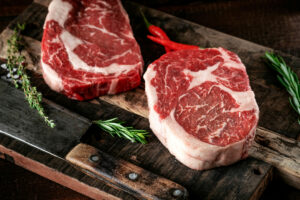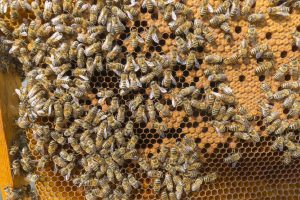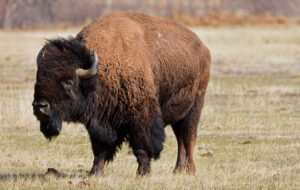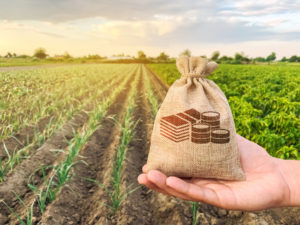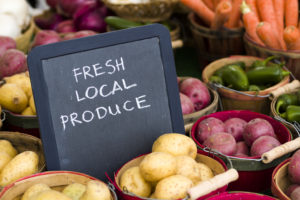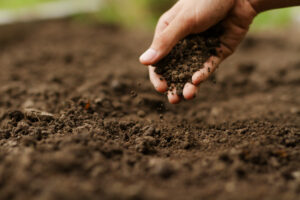DCHA Offers Two $1,000 Scholarships
Due to generous support from auctioning off the original Bonnie Mohr painting – “Enchanted Pastures” – the Dairy Calf and Heifer Association (DCHA) will award an additional $1,000 scholarship in 2024.
To be eligible for one of DCHA’s $1,000 scholarships, applicants must be a college student and DCHA member; or the parent/legal guardian must belong to DCHA. Applications are due Feb. 21. An individual may only receive a DCHA scholarship once.
To apply for the scholarship, applicants must:
• Complete at least one year of post high school education
• Be an enrolled student in good standing at an accredited college or university
• Be enrolled in a field of agriculture (e.g., dairy science, animal science, veterinary science, agricultural technical program, ag communications) or in a course of study with relevance to agriculture (preference is given to dairy calf/heifer-related fields of study)
• Be a DCHA member; or the son, daughter or legal dependent of a DCHA member
Applications must be received by end of business day on Wednesday, February 21, 2024. Email completed applications to jodee@calfandheifer.org.
Go to: https://calfandheifer.org/scholarship for more information and to apply.
Lower Retail Beef Demand Reflected In Price
Jeff Swenson, DATCP livestock and meat specialist, prepared and wrote the following market update. It draws information from several sources, including trade publications, radio broadcasts, agricultural news services, individuals involved in the industry as well as USDA reports.
The Choice carcass cutout value has dropped significantly this week. January generally brings lower retail beef demand, so it is common for wholesale prices to back off from pre-Holiday levels. The cutout value averaged $291.45 last week, but lost $5.37 Tuesday and $6.31 Wednesday of this week. This is a larger decline than we would typically expect.
Show lists are larger this week, especially given a lighter production schedule during the two holiday shortened weeks. It would be expected that live cattle prices would also work lower given this news, but reports of higher cash bids began developing mid-week. Major winter storms are in the forecast early next week for the Eastern Seaboard and Great Plains. So, packers may be looking to own inventory ahead of the expected supply chain challenges.
Cash cattle finished last week $2.00/cwt higher.
The estimated harvest total last week was 508,000 head. That’s 113,000 less than the previous week and 27,000 fewer than the same week last year. The Saturday harvest was estimated at 7,000 head.
Market cow prices were another $1 to $3/cwt higher this week, indicating that post-Holiday ground beef demand is building.
Fed cattle prices were mostly steady to higher this week.
High Choice and Prime beef breed steers and heifers brought $166 to $170/cwt with some to $176. Choice steers and heifers ranged from $159 to $166/cwt. with mixed grading and those likely to grade Select bringing $150 to $158/cwt. Holstein steers were mostly steady to $1 higher. High grading steers brought to $148 to $153 with some lots to $155/cwt. Lower grading steers brought $122 to $148. Silage fed, under finished or heavy dairy breed steers brought $75 to $122/cwt. Dairy x Beef steers were steady to higher, bringing $126 to $163/cwt with a few higher.
Cows were higher. A bulk of the cows brought $60 to $87/cwt with some fleshier dairy and beef cows selling into the low to high $90s/cwt and a few to $100/cwt. Doubtful health and thin cows were bringing $60/cwt and down.
Dairy breed bull calves were fully steady, bringing $100 to $300/cwt with some heavier, well-managed calves selling to $410. Beef and Beef Cross calves were lower selling up to $600/cwt.
Generational “Buzz”: The Legacy of Honey Grove Apiaries
A rich heritage of beekeeping, spanning three generations, has grown into a thriving enterprise for one dedicated individual in Southeast Wisconsin. Nick Thill, owner of Honey Grove Apiaries and the president of the Wisconsin Honey Producers Association (WHPA), was introduced to beekeeping when he was only 12 years old when his aunt gave him his first six hives. Little did he know that this would seed a lifelong passion.
“I have grown my operation from the original six hives to now having about 350,” says Thill. “We specialize in direct-to-consumer sales, predominantly in Southeast Wisconsin, particularly the Milwaukee area.”
However, like many beekeepers across Wisconsin, Thill faces a plethora of challenges. Dealing with issues like brood mite infestations and the changing agricultural landscape has significantly impacted bee nutrition and foraging opportunities. Moreover, the unexpected arrival of black bears in Southeast Wisconsin has become a pressing concern. This has resulted in the establishment of the Black Bear Advisory Committee.
“The WHPA provides a platform for beekeepers of all scales, fostering a community that encourages education, networking, and skill enhancement,” explains Thill. “This association facilitates numerous events, such as conventions and district meetings, offering both beekeepers and the public opportunities to learn and engage.”
Looking ahead, Thill says he and the WHPA are focused on the importance of education for aspiring beekeepers.
He adds, “We encourage newcomers to seek mentorship, attend meetings, and absorb as much information as possible. Understanding the magnificent world of bees firsthand is a compelling reason to join this field.”
WFU Receives Farm Aid Grant
Farm Aid announced recently that the Wisconsin Farmers Union (WFU) is one of the recipients of the organization’s year-end grants. Wisconsin Farmers Union received a grant from Farm Aid to support farmer-labor solidarity, coalition building and public messaging about shared experiences in the face of corporate consolidation in the food and farming system.
Farm Aid announced that it has distributed more than $1.3 million in grant funding in 2023. The organization prioritized grant proposals from organizations that facilitate farmer-led solutions to climate change — which was the focus of the annual Farm Aid festival — as well as organizations that support family farmers experiencing crisis and farm stress, advance racial equity in agriculture, and stop the growth of industrial and corporate power in agriculture.
“We are honored and grateful to receive this generous grant from Farm Aid,” said WFU President Darin Von Ruden. “With this funding, we will be able to expand our outreach in regards to farmer-labor solidarity and continue advocating for family farms and rural communities in Wisconsin. We extend our heartfelt thanks to Farm Aid for their support and commitment to creating real change in our farm and food system.”
“Folks are stepping up to do their part to shift agriculture to benefit farmers, rural communities, our climate, soil and water, and all of us,” said Farm Aid President Willie Nelson. “It’s thanks to the generosity of so many people who purchase Farm Aid festival tickets and donate to our work that we’re able to send these funds to organizations working to grow an equitable and sustainable farm and food system.”
Farm Aid’s grantmaking is one aspect of its work to keep family farmers on the land, growing good food for all. For a complete listing of Farm Aid’s 2023 grant recipients, visit farmaid.org/2023grants.
Rudin-Rush A 2024 Farm Foundation Scholar
Lorin Rudin-Rush is a recipient of the Farm Foundation 2024 Agricultural Scholars. This annual program is sponsored in partnership with the U.S. Department of Agriculture’s (USDA) Economic Research Service (ERS). Twenty applied or agricultural economics graduate students were selected to join the program for inspiration and training in agricultural policy, commodity market analysis, agricultural finance, and other applied fields.
Rudin-Rush is in his first year as a Ph.D. student in agricultural and applied economics at the University of Wisconsin. His master’s research focused on food security and the COVID-19 pandemic in Africa.
“This is just an incredible group of students,” says Program Manager Jenna Wicks. “Thanks to ERS’ continued generous partnership we are able to create a year of landmark opportunities for these program participants which will set them on rare footing as they enter their careers.”
WBPA Annual Conference Jan. 26-28
The Wisconsin Bison Producers Association (WBPA) is hosting its annual conference on January 26-28, 2024 in Green Bay, Wisconsin. The Oneida Nation will be sponsoring this year’s event at the Radisson Hotel Conference Center and Casino. Saturday’s lineup includes Nichole Abbot, Food Scientist from the Department of Agriculture, Trade and Consumer Protection (DATCP). She will be discussing Licensing and Inspection. Cindy Gedritis, along with Dr. Katie Ernst will discuss Back In Time Bison Ranch roundup with students from UW Madison School of Veterinary Medicine. Field kills and Ante-Mortem handling will be presented by Cindy Klug from C. Klug and Associates, LLC. TJ Swiecichowski will present a video tour of the Oneida Nation Farm. Lydia Whitman, NBA Program Manager will provide a National Bison Association update. Barbara Vertain will present our updated website and Logo.
Saturday breakfast, lunch and dinner are provided. Sunday morning concludes with Brunch on the farm hosted by Mike and Connie Mass and family in Seymour, Wisconsin.
Registration is required for this event. For more information and to register contact Tanya Holcomb at 715-897-1340 or tanya.holcomb@gmail.com or check the WBPA Website www.wibison.com.
47 Receive Producer-Led Watershed Protection Grants
The Wisconsin Department of Agriculture, Trade and Consumer Protection (DATCP) has awarded $1 million in producer-led watershed protection grants (PLWPG) to 47 farmer-led groups for 2023. Grants support producer-led conservation solutions by encouraging innovation and farmer participation in on-the-ground efforts to improve Wisconsin’s soil health and water quality.
“Across the state, producer-led groups are doing tremendous work caring and advocating for our state’s land and water resources, and those efforts continue to grow year after year,” said Gov. Evers. “This program supports farmers who aim to engage with their communities in a variety of conservation initiatives.”
This is the ninth round of grant awards since funding was first made available in the 2015-17 biennial budget. Annual interest in DATCP’s PLWPG program continues to exceed the program budget. This funding cycle received the highest amount of requests in the history of the program, with 47 groups applying for a total funding request of almost $1.6 million. This year’s grant cycle funding will support four new groups while helping veteran groups continue to advance their work.
“The Horse Creek Farmer-Led Watershed was one of the first two farmer-led watershed efforts funded by DATCP. Over the course of the almost 10 years since we started, it has been very rewarding watching the acceptance of conservation practices by farmers grow in the watershed,” said Timm Johnson, member of the Horse Creek Farmer-Led Watershed Council. “The model is that farmers learn best from other farmers by watching, talking with, and adopting the best management practices.”
A map of recipients can be found on DATCP’s website. The recipients and award amounts include:
- Bad-Axe Farmer-Led Watershed Council – $29,600
- Biological Farming Friends – $12,314
- Buffalo Trempealeau Farmer Network – $29,600
- Calumet County Ag Stewardship Alliance – $17,100
- Cedar Creek Farmers – $3,700
- Central Wisconsin Farmers’ Collaborative – $18,591
- Chippewa Valley Producer Led Watershed – $22,800
- Coon Creek Community Watershed Council – $22,800
- Dodge County Farmers for Healthy Soil & Healthy Water – $26,400
- Dry Run Farmer-Led Watershed Council – $14,406
- Eau Pleine Partnership for Integrated Conservation – $29,600
- Farmers for Lake Country – $23,100
- Farmers for the Upper Sugar River – $26,400
- Farmers for Tomorrow River Watershed Council – $29,600
- Farmers of Mill Creek Watershed Council – $26,400
- Farmers of the Barron County Watersheds – $18,525
- Farmers of the Lemonweir Valley – $22,800
- Farmers of the Roche-A-Cri – $10,360
- Farmers of the Sugar River – $26,142
- Farmers on the Rock – $35,200
- Farmers4Health – $18,591
- Flambeau Valley Watershed Group – $11,022
- Fond du Lac County Watersheds Alliance* – $29,600
- Green County Clean Waters – $19,388
- Hay River Farmer-Led Watershed Council – $9,291
- Horse Creek Area Farmer Led Watershed Council – $13,941
- Iowa County Uplands Watershed Group – $18,516
- Jefferson County Soil Builders – $29,600
- Kenosha County Regenerative Producers – $28,651
- Lafayette Ag Stewardship Alliance – $29,600
- Lake Wisconsin Farmer Watershed Council – $24,420
- Milwaukee River Watershed Clean Farm Families – $29,600
- Muddy Bottom Farmers* – $5,000
- Peninsula Pride Farms – $29,600
- Producers of Lake Redstone – $18,591
- Red Cedar Conservation Farmers – $22,800
- Rock River Regenerative Graziers – $26,400
- Rush Creek Watershed Conservation Council* – $22,800
- Sauk Soil & Water Improvement Group – $22,000
- Seven Rivers Soil Cooperative* – $7,000
- Sheboygan River Progressive Farmers – $17,100
- Shell Lake, Yellow River Watershed Council – $15,860
- South Kinni Farmer Led Watershed Council – $11,400
- Tainter Creek Farmer-Led Watershed Council – $22,800
- Watershed Protection Committee of Racine County – $29,600
- Western Wisconsin Conservation Council – $22,800
- Yahara Pride Farms, Inc. – $18,591
Note: New groups marked with an asterisk*.
DCFM – Late Winter Market begins Jan. 6
Beginning on Saturday, January 6, 2024, and running each Saturday through April 6, 2024, the Dane County Farmers’ Market will host its weekly Late Winter Market at Garver Feed Mill, from 8 a.m. to noon.
Customers will find 40 of their favorite Dane County Farmers’ Market members, which includes a full array of seasonal Wisconsin fruits and vegetables, cheeses, honey and maple syrups, local meats, bakery items, and many specialty items. The Dane County Farmers’ Market Cookbook: Local Foods, Global Flavors will also be for sale, to help market patrons brighten winter nights with delectable dishes. Find more information about the cookbook on our website.
Additionally, visit our website for directions, information on parking, accessibility and more. There are a limited number of parking spots at Garver Feed Mill. However, there are plenty of parking options only a 3-5 minute walk away. Please review your parking options before visiting the market so those with limited mobility or small children can park as close as possible to the building. The walk from these lots to Garver is shorter than a walk halfway around the Square!
Garver is also conveniently located along the Capital City Trail bike path and is on several bus routes, including routes A, B, C, and D. Consider these modes of transportation to our Late Winter Market.
You can also check out our guide on ‘How to Have an Awesome Visit to Our Late Winter Market” for more details on what to expect and how to find the freshest Wisconsin grown goodness in the depths of winter.
Class III Price Driven By Dry Whey, China
The Class III milk and cheese markets have started 2024 mixed. Ever.Ag broker and agent Kathleen Wolfley says producers should keep an eye on the dry whey market. If that market moves just a penny, it can influence Class III milk by about 6 cents.
“Whey prices seem to be relatively stable going into 2024,” she says. “Yet, we’ve seen pretty good demand for high-protein whey, and there’s certainly potential that if we continue to see good high-protein whey demand, and dry whey markets tart to tighten up a little bit… that could tighten things up and give the Class III market a little bit of a boost.”
When it comes to cheese, Wolfley says the U.S. is in a weak demand position both domestically and internationally. U.S. consumers haven’t been going out to eat. Exports aren’t that stellar, either.
Wolfley adds that China is the country to watch as their demand was somewhat subdued in 2023, and the U.S. has seen quiet activity from them. While the Middle East has picked up some of the slack, it’s not making a big difference.
“Overall, I think that the GDT (Global Dairy Trade) auction was relatively quiet — not really a big mover and shaker at least to start the year,” she says.
From a European perspective, milk supply was sluggish to end 2023, Wolfley says. Germany and France both saw lower milk production — they are the top two milk-producing countries in the EU.
“As we start 2024, the expectation is that we could continue to see relatively lackluster milk production out of the region,” she says. “They have more environmental restrictions that could ultimately impact some of their growth potential here in the new year.”
The Power of Activating Your Soil Microbes
Do you struggle to find the right mix of microbes to add to your soil? Instead of relying on traditional methods of adding a select few microbial strains to the soil, experts advocate for activating the natural balance of hundreds of existing microbes. This approach yields benefits in nutrient availability, crop health, and environmental sustainability.
“Some microbes specialize in nitrogen fixation, others in phosphorus solubilization, while collectively contributing to making essential micronutrients readily available to plants,” explains Nick Becker, Director of Field Sales for Sound Agriculture. “This multifaceted approach fosters a balanced ecosystem within the soil, optimizing nutrient uptake by crops.”
He added that while initially perceived as a cost-effective solution, an over-reliance on synthetic nitrogen disrupts the soil’s equilibrium. This can lead to the tie-up of crucial nutrients. This not only limits the effectiveness of expensive inputs but also starts soil degradation over time.
By activating native microbes, farmers can reduce waste, enhance their return on investment, and uphold soil integrity.
“Our product, ‘Source,’ is a unique formula that stimulates indigenous soil microbes responsible for nitrogen fixation, phosphorus solubilization, and micronutrient enhancement,” says Becker. “Its low application rate, merely one to two and a half ounces per acre, helps growers to maximize in-season nutrient availability efficiently.”
The impact of activating soil microbes extends beyond economic gains; it plays a key role in water quality management. Becker says their studies indicate a reduction in nitrogen leaching, contributing to enhanced water quality.
Becker adds, “Source is an innovative chemistry that’s not reliant on live microbes. It ensures ease of use and compatibility with common agricultural products like herbicides and fungicides. Its mode of action aligns with familiar products, offering a hassle-free integration into existing farming practices.”


